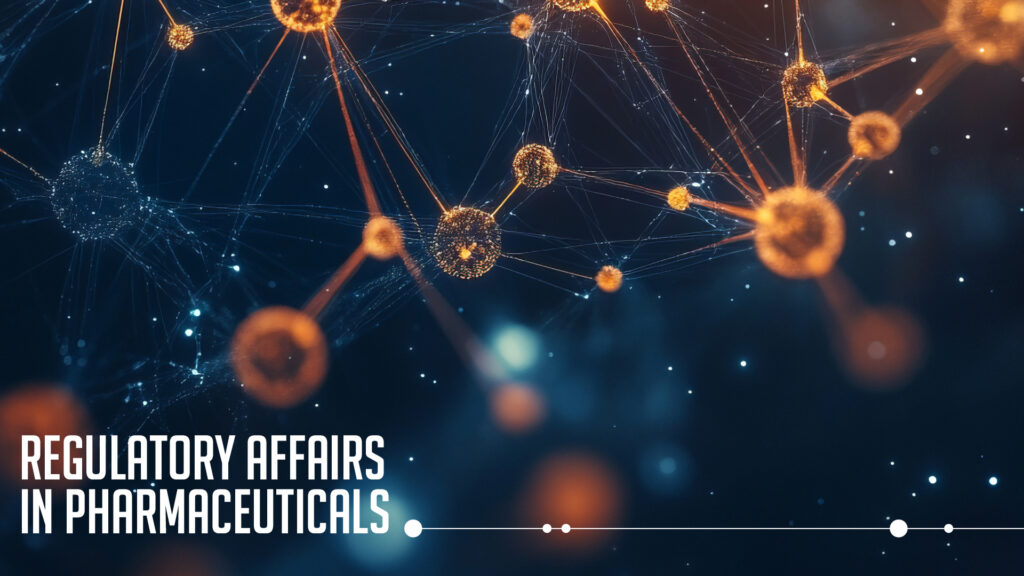
The evolving landscape of pharmaceutical development and commercialization demands increasingly sophisticated approaches to regulatory strategy and compliance. As market dynamics shift and regulatory requirements become more complex, organizations must develop robust capabilities to navigate this changing environment effectively.
Define regulatory affairs in pharma: beyond basic compliance
Regulatory affairs in pharmaceuticals encompasses far more than simple compliance with established rules.
This multifaceted discipline combines scientific expertise, strategic thinking, and detailed procedural knowledge to guide products through development, approval, and post-marketing phases.
As highlighted in our analysis of Pharma Industry Trends, regulatory affairs has become a key strategic function that influences business decisions throughout the product lifecycle.
Strategic integration
Modern regulatory affairs functions must integrate closely with other organizational departments, including research and development, clinical operations, manufacturing, and marketing.
This integration ensures regulatory considerations inform decision-making from the earliest development stages through commercial operations. Approximately 65% of pharmaceutical companies report that early regulatory involvement has significantly reduced development timelines and approval challenges.
Submission management
The management of regulatory submissions requires meticulous attention to detail and comprehensive understanding of requirements across different jurisdictions.
Regulatory teams must coordinate complex submission processes while ensuring consistency and compliance.
This includes developing and implementing robust documentation systems, tracking submission status, and managing regulatory authority communications.
Post-approval compliance
Maintaining regulatory compliance after product approval involves ongoing monitoring and management of various obligations.
This includes implementing effective pharmacovigilance systems, managing product changes, and maintaining current product information. Regulatory teams must stay informed about evolving requirements while ensuring continued compliance across all markets.
EMA and FDA: navigating key regulatory authorities
The European Medicines Agency (EMA) and the U.S. Food and Drug Administration (FDA) represent two of the world’s most influential regulatory authorities. Understanding their approaches, requirements, and procedures is essential for successful pharmaceutical development and marketing.
Similar to considerations for medical devices outlined in our Medical Devices EU Regulation guide, pharmaceutical regulatory strategies must address specific requirements for each authority.
Approval pathways
Both the EMA and FDA offer various approval pathways designed to address different product types and public health needs.
The FDA’s pathways include standard review, priority review, accelerated approval, and breakthrough therapy designation. The EMA offers centralized, decentralized, mutual recognition, and national procedures.
Understanding the appropriate pathway for specific products significantly impacts development strategy and timelines.
Review processes
The review processes employed by the EMA and FDA share similarities but maintain important differences that influence submission strategy. The FDA typically follows a sequential review process with defined timelines, while the EMA employs a more collaborative approach involving multiple member states.
Recent data indicates that review times for standard applications average approximately 12 months for both authorities, though expedited pathways can significantly reduce this timeline.
Scientific advice
Both regulatory authorities offer formal scientific advice processes that provide valuable guidance during development. Engaging with these processes helps organizations understand regulatory expectations and optimize development programs.
Statistics show that products that utilized formal scientific advice mechanisms achieved higher first-cycle approval rates (approximately 85% compared to 50% for those without such engagement).
Deep dive: regulatory strategy development
Global harmonization considerations
Developing effective global regulatory strategies requires understanding of both harmonized standards and regional requirements:
Key harmonization elements:
- International Council for Harmonisation (ICH) guidelines implementation
- Common Technical Document (CTD) format requirements
- Global clinical trial designs
- Data standardization approaches
- Quality system requirements
- Post-market surveillance harmonization
- Change management strategies
- Electronic submission standards
Risk management integration
Successful regulatory strategies incorporate comprehensive risk assessment and management throughout the product lifecycle. The EU regulatory framework for both pharmaceuticals and medical devices emphasizes risk-based approaches, similar to FDA requirements.
Frequently Asked Questions
How is regulatory affairs evolving with digital transformation?
Digital technologies are transforming regulatory operations through electronic submissions, data analytics, and artificial intelligence applications. Organizations must develop capabilities for managing electronic documentation while ensuring data integrity and security.
What skills are essential for regulatory affairs professionals?
Success requires a combination of scientific knowledge, regulatory expertise, and strategic thinking capabilities. Professionals should understand both technical requirements and business implications while maintaining effective communication with stakeholders.
How can companies optimize global regulatory strategies?
Effective global strategies require comprehensive understanding of regional requirements, careful planning, and strategic resource allocation. Organizations should consider market priorities, development timelines, and local regulatory landscapes.
What impact will artificial intelligence have on regulatory affairs?
AI will transform many aspects of regulatory operations, from submission preparation to compliance monitoring. However, human expertise remains essential for strategy development and authority interactions.
Conclusion
Excellence in pharmaceutical regulatory affairs requires sophisticated understanding of requirements combined with strategic thinking and technological adaptation.
Organizations must invest in developing robust regulatory capabilities while maintaining flexibility to address emerging challenges.
Through comprehensive regulatory strategies, pharmaceutical companies can navigate complex requirements while optimizing development timelines and market access opportunities.